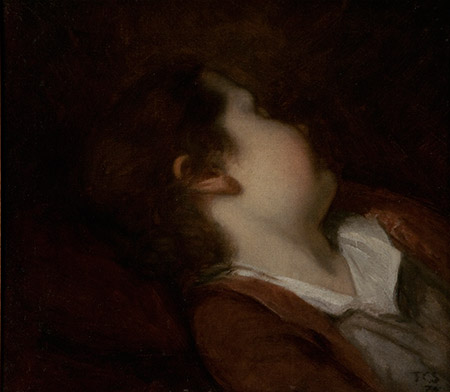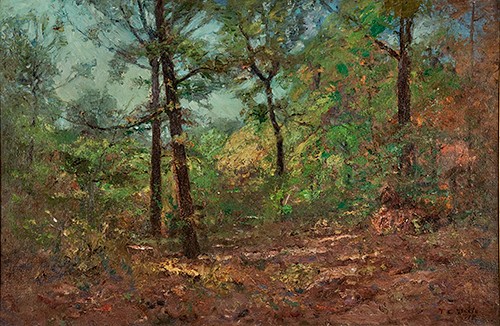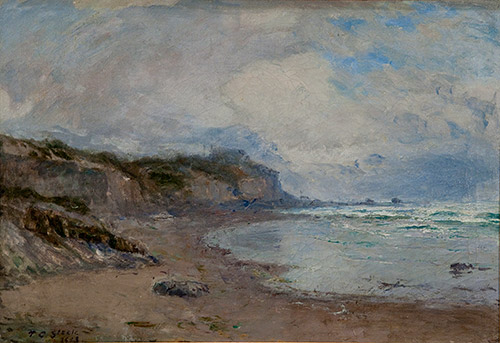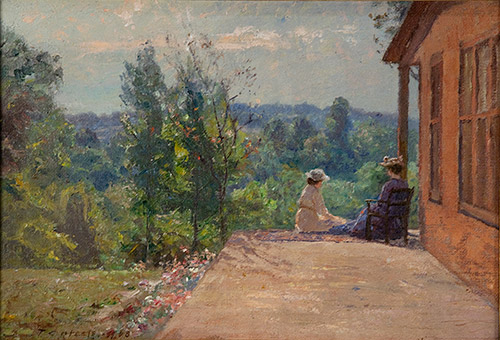At Home in Indiana
October 19, 2010
In what DePauw President Brian W. Casey called one of the most significant gifts of fine art in the University’s recent history, a private collection of T.C. Steele paintings returned to their Indiana roots.
Guests at the Oct. 10 dedication of the paintings, gifts of 1954 DePauw alumna Betty Davis Givens and her husband, David, were treated to a special viewing of six of Steele’s works before they find a permanent home on DePauw’s campus. A seventh Steele painting, “Summer Afternoon,” is also promised as part of the gift.
“These are excellent examples of Steele’s work,” says Kaytie A. Johnson, director and curator of University galleries, museums and collections. “They’re a wonderful addition to DePauw’s permanent art collection, and certainly add breadth to our existing holdings of historical works by Indiana artists. For an art student – or any student – to have them here to study is a wonderful opportunity.”
The paintings represent nearly 50 years of Steele’s work. They not only show his dramatic change in technique over that period, but also serve as a pictorial autobiography of his life.
“Portrait of Brandt Steele” (1874), which depicts Steele’s sleeping son, is the earliest of the gifted paintings and perhaps the least recognizable to those familiar with his famous landscapes. Before Steele adopted the colorful palette of French Impressionism, his classical training in Cincinnati, Chicago and Munich produced darker, more dramatic work.

Shortly after Steele returned to Indianapolis from Munich, he found that the open, light-filled canvases of Impressionists such as Monet and Renoir best captured the beauty of Indiana’s countryside. “Forest in Summer” (1918) typifies both this change in technique and the work for which he is best known.

“Steele spread the impressionist style well beyond the metropolitan areas of New York and Chicago,” says Laurette E. McCarthy, an American art historian who has been a guest curator for exhibits at DePauw.
Steele and four other artists – J. Ottis Adams, William Forsyth, Richard Gruelle and Otto Stark – became known as the Hoosier Group for their plein air Indiana landscapes. In 1904 their fame swelled when an entire building at the World’s Fair in St. Louis was devoted to their art.
True to his subject, Steele felt at peace in the pastoral setting of his work. Shortly after the turn of the century, Steele’s wife, Libby, passed away. He once said of her, “[She] is my most helpful critic. She brings to me a clearer eye, a more poetic vision.” In the wake of her death, Steele withdrew to Oregon, where, in paintings such as “Oregon Coastal Seascape” (c. 1903), he became one of the first prominent artists to paint the state’s coastal region.

By 1907 Steele had remarried and moved to secluded Brown County, Ind., helping to form the Brown County Art Colony. He and his second wife, Selma, built a home outside of Nashville, Ind., called House of the Singing Winds, now an Indiana state historic site. In “Afternoon at House of Singing Wind” (1908), two women sit in conversation at the site where Steele painted until his death in 1926.

The Steele paintings are not Givens' first gift of art to DePauw, and, incredibly, perhaps not her most significant. She and her twin sister, Marjorie Davis Morehead '54, endowed the Morehead-Givens Endowed Scholarship Fund, which provides financial support for DePauw students to travel abroad for the study of art. So far, 131 DePauw students have benefited from this fund.
The DePauw University Online Photo Gallery contains photo albums of the dedication ceremony and six of the gifted paintings.
Back